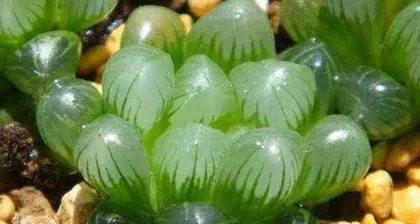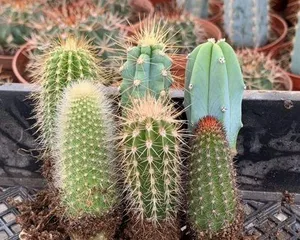In recent years, succulent plants have become an indispensable part of urban life due to their unique shapes, cute appearance, and easy maintenance. However, for beginners, how to choose and care for succulent plants has become a major challenge. This article will bring you succulent plant cultivation techniques.

I. Choosing Healthy Succulent Plants
Selecting strong succulent plants is the first step in successful cultivation. We can determine if a succulent plant is healthy by observing the thickness, color, and texture of its leaves.
II. Proper Watering Methods
Since succulent plants have strong survival abilities, they don't need frequent watering. We can determine whether to water by observing if the soil surface is dry and if the leaves are soft.

III. Suitable Temperature and Humidity
Most succulent plants thrive in warmer and drier environments and generally don't require much humidity. However, in dry conditions, we can appropriately increase the humidity.
IV. Appropriate Light Conditions
Most succulent plants prefer bright light environments, but intense sunlight can damage them. When caring for succulent plants, we should avoid direct sun exposure.
V. Ventilation Considerations
Good ventilation is essential for succulent plant growth. We can solve ventilation issues by placing succulents in well-ventilated areas or opening windows for ventilation.

VI. Proper Fertilization
Succulent plants don't need frequent fertilization. We can increase soil nutrients by making homemade fertilizer or using commercially available specialized succulent fertilizers.
VII. Pest and Disease Prevention
Succulent plants are susceptible to aphids and mites. When pests are discovered, we should take appropriate control measures, such as spraying with soapy water or using insecticides.
VIII. Regular Pruning and Shaping
Succulent plants often experience leaf drop and yellowing. We can promote their growth and development through regular pruning and shaping.
IX. Choosing Appropriate Pots and Soil
Selecting suitable pots and soil is crucial for succulent plant growth. We can choose pots with good permeability that don't retain water easily, and loose, breathable soil.
X. Seasonal Care and Repotting
Succulent plants require different care methods in different seasons. For example, moisture retention is needed in summer, while avoiding low temperatures in winter. Additionally, based on the plant's growth condition, we need to repot and change the soil regularly.
XI. Succulent Plant Propagation Methods
Succulent plants can be propagated through leaf cuttings, stem cuttings, and division. We can choose appropriate propagation methods based on different succulent species.
XII. Artistic Applications of Succulent Plants
Succulent plants are not only charming plants but also excellent artistic materials. We can create unique succulent gardens through combination and arrangement of succulent plants.
XIII. Psychological Value of Succulent Plants
Succulent plants have psychological benefits such as relieving tension and reducing stress. In busy lives, caring for succulent plants is also a great way to relax.
XIV. The Importance of Caring for Succulent Plants
Succulent plants are precious living beings that we should cherish and care for, allowing them to play more roles in our lives.
XV. Succulent Plant Care Tips
Here are some succulent plant care tips: choosing healthy succulent plants, proper watering, suitable temperature and humidity, appropriate light conditions, good ventilation, proper fertilization, pest and disease prevention, regular pruning and shaping, choosing appropriate pots and soil, seasonal care and repotting, succulent plant propagation methods, artistic applications of succulent plants, psychological value of succulent plants, and the importance of caring for succulent plants.
```